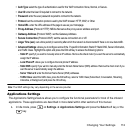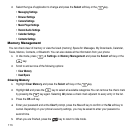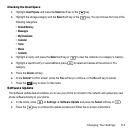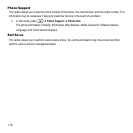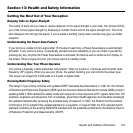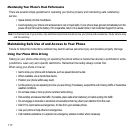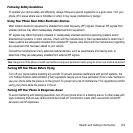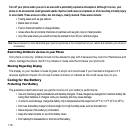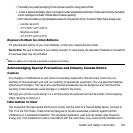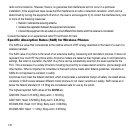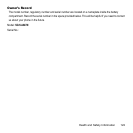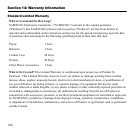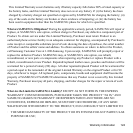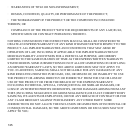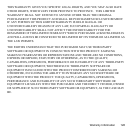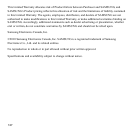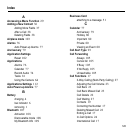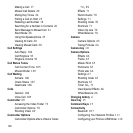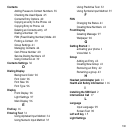121
radio communications. However, there is no guarantee that interference will not occur in a particular
installation; if this equipment does cause harmful interference to radio or television reception, which can be
determined by turning the equipment off and on, the user is encouraged to try to correct the interference by one
or more of the following measures:
•
Reorient / relocate the receiving antenna.
•
Increase the separation between the equipment and receiver.
•
Connect the equipment into an outlet on a circuit different from that to which the receiver is connected.
Consult the dealer or an experienced radio/TV technician for help.
Specific Absorption Rates (SAR) for Wireless Phones
The SAR is a value that corresponds to the relative amount of RF energy absorbed in the head of a user of a
wireless handset.
The SAR value of a phone is the result of an extensive testing, measuring and calculation process. It does not
represent how much RF the phone emits. All phone models are tested at their highest value in strict laboratory
settings. But when in operation, the SAR of a phone can be substantially less than the level reported to the
FCC. This is because of a variety of factors including its proximity to a base station antenna, phone design and
other factors. What is important to remember is that each phone meets strict federal guidelines. Variations in
SARs do not represent a variation in safety.
All phones must meet the federal standard, which incorporates a substantial margin of safety. As stated above,
variations in SAR values between different model phones do not mean variations in safety. SAR values at or
below the federal standard of 1.6 W/kg are considered safe for use by the public.
The highest reported SAR values of the
A847M
are:
GSM 850: Head: 0.33 W/Kg; Body-worn: 1.38 W/kg
GSM 1900: Head: 0.52W/Kg; Body-worn: 0.48 W/kg
WCDMA 850: Head: 0.61 W/kg; Body-worn: 0.66W/kg
WCDMA1900: Head: 1.1 W/kg; Body-worn: 0.63W/kg



